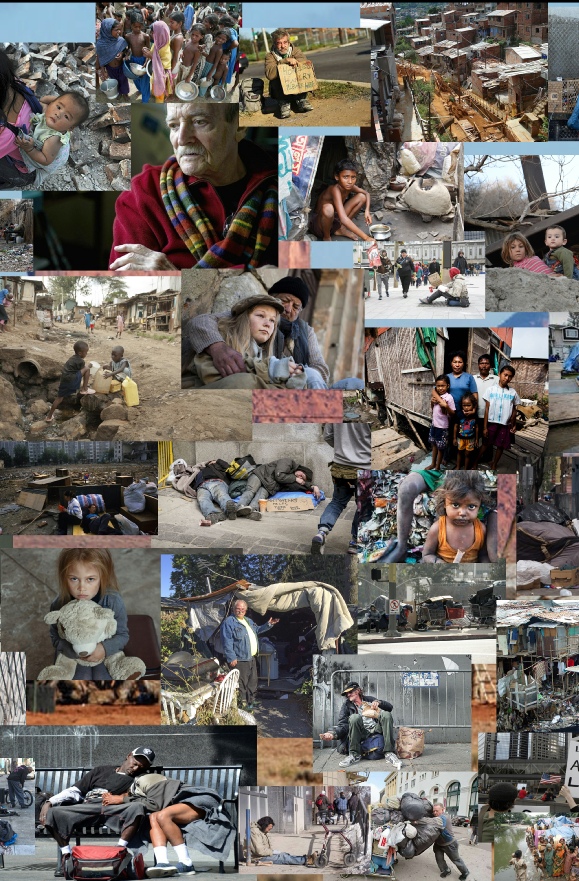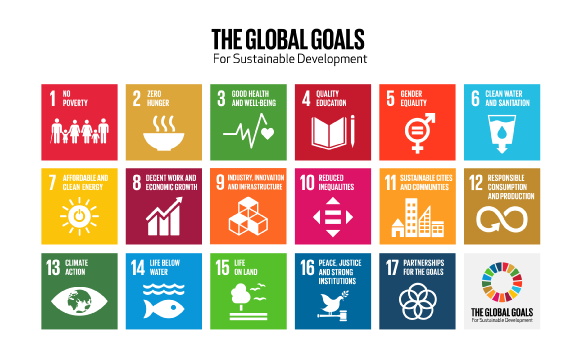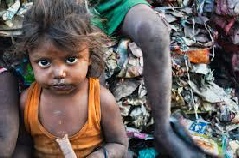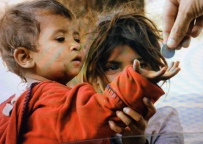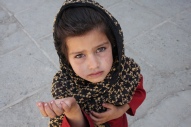




According to UNICEF, 22,000 children die each day due to poverty. And, they die quietly in some of the poorest villages on earth, far removed from the scrutiny and the conscience of the world. Being meek and weak in life makes these dying multitudes even more invisible in death.
Around 27-
Based on enrollment data, about 72 million children of primary school age in the developing world were not in school in 2005; 57 percent of them were girls. And these are regarded as optimistic numbers. Nearly a billion people entered the 21st century unable to read a book or sign their names. Less than one percent of what the world spends every year on weapons could put every child into school.
Infectious diseases continue to blight the lives of the poor across the world. An estimated 40 million people are living with HIV/AIDS, with 3 million deaths in 2004. Every year there are 350–500 million cases of malaria, with 1 million fatalities: Africa accounts for 90 percent of malaria deaths, and African children account for over 80 percent of malaria victims worldwide.
Water problems affect half of humanity. Some 1.1 billion people in developing countries have inadequate access to water. Almost two in three people lacking access to clean water survive on less than $2 a day, with one in three living on less than $1 a day. Access to piped water into the household averages about 85% for the wealthiest 20% of the population, compared with 25% for the poorest 20%. 1.8 billion people who have access to a water source within 1 kilometer, but not in their house or yard, consume around 20 liters per day.
2.6 billion lack basic sanitation. More than 660 million people without sanitation live on less than $2 a day, and more than 385 million on less than $1 a day. In the United Kingdom, the average person uses more than 50 liters of water a day flushing toilets (where average daily water usage is about 150 liters a day. The highest average water use in the world is in the US, at 600 liters day.)
Some 1.8 million child deaths each year as a result of diarrhea. The loss of 443 million school days each year from water-
Millions of women spending several hours a day collecting water. To these human costs can be added the massive economic waste associated with the water and sanitation deficit. The costs associated with health spending, productivity losses and labor diversions are greatest in some of the poorest countries. Sub-
Rural areas account for three in every four people living on less than US$1 a day and a similar share of the world population suffering from malnutrition. However, urbanization is not synonymous with human progress. Urban slum growth is outpacing urban growth by a wide margin. Approximately half the world’s population now live in cities and towns. In 2005, one out of three urban dwellers (approximately 1 billion people) was living in slum conditions.
In developing countries, some 2.5 billion people are forced to rely on biomass—fuelwood, charcoal and animal dung—to meet their energy needs for cooking. In sub-
Approximately 790 million people in the developing world are still chronically undernourished, almost two-
Poverty and poor health worldwide are inextricably linked. The causes of poor health for millions globally are rooted in political, social and economic injustices. Poverty is both a cause and a consequence of poor health. Poverty increases the chances of poor health. Poor health, in turn, traps communities in poverty. Infectious and neglected tropical diseases kill and weaken millions of the poorest and most vulnerable people each year.
Marginalized groups and vulnerable individuals are often worst affected, deprived of the information, money or access to health services that would help them prevent and treat disease. Very poor and vulnerable people may have to make harsh choices – knowingly putting their health at risk because they cannot see their children go hungry, for example. The cultural and social barriers faced by marginalized groups – including indigenous communities – can mean they use health services less, with serious consequences for their health. This perpetuates their disproportionate levels of poverty.
The cost of doctors’ fees, a course of drugs and transport to reach a health center can be devastating, both for an individual and their relatives who need to care for them or help them reach and pay for treatment. In the worst cases, the burden of illness may mean that families sell their property, take children out of school to earn a living or even start begging. The burden of caring is often taken on by a female relative, who may have to give up her education as a result, or take on waged work to help meet the household’s costs. Missing out on education has long-
Overcrowded and poor living conditions can contribute to the spread of airborne diseases such as tuberculosis and respiratory infections such as pneumonia. Reliance on open fires or traditional stoves can lead to deadly indoor air pollution. A lack of food, clean water, and sanitation can also be fatal. HIV, diarrhea, tuberculosis, and malaria, as well as communicable respiratory diseases such as pneumonia, kill the most people. Diarrhea, pneumonia, and malaria account for nearly half of all child deaths globally.
The International Food Study Institute had a brief on a collection of extensive studies that analyzed the causes of poverty, analyzing household data and reviewing empirical research in 20 countries. They found that some of the major causes of poverty were the inability of poor households to invest in property and education, limited access to credit, in some cases these instances produce more poverty via inherited poverty. The systematic exclusion of ethnic minorities, scheduled castes, tribes, women, and people with disabilities and health issues. Persistence of poverty is partially attributed to these classes not having access to institutions and markets.
War and violence may be some of the primary causes of poverty. Political violence and organized crime have affected 39 countries since 2000, in those countries the poverty level is twice that of non-
World leaders and international organizations have slowly woken up to the impact of the most prevalent infectious diseases. The World Health Organization has declared TB, HIV and malaria global emergencies. Reducing the spread and treating HIV, TB, malaria, and other diseases are also one of the Millennium Development Goals. However, as well as tackling specific diseases, it is crucial that leaders also address the underlying causes. It is widely accepted that the key reason for the increase in life expectancy in wealthy countries in the late 19th and early 20th century was less to do with the leaps forward in medical science, and more to do with the arrival of better nutrition, clean water, and sanitation.
Reducing poverty, improving nutrition and making sure people have access to safe water and sanitation, as well as strengthening national health systems, is of the utmost importance. Otherwise tackling one particular threat simply leaves people open to another deadly disease soon afterward. Tackling the structural causes of poverty and poor health, for example calling for measures to tackle inequality and injustices such as corporate tax evasion, are central to what is needed from the global community.
